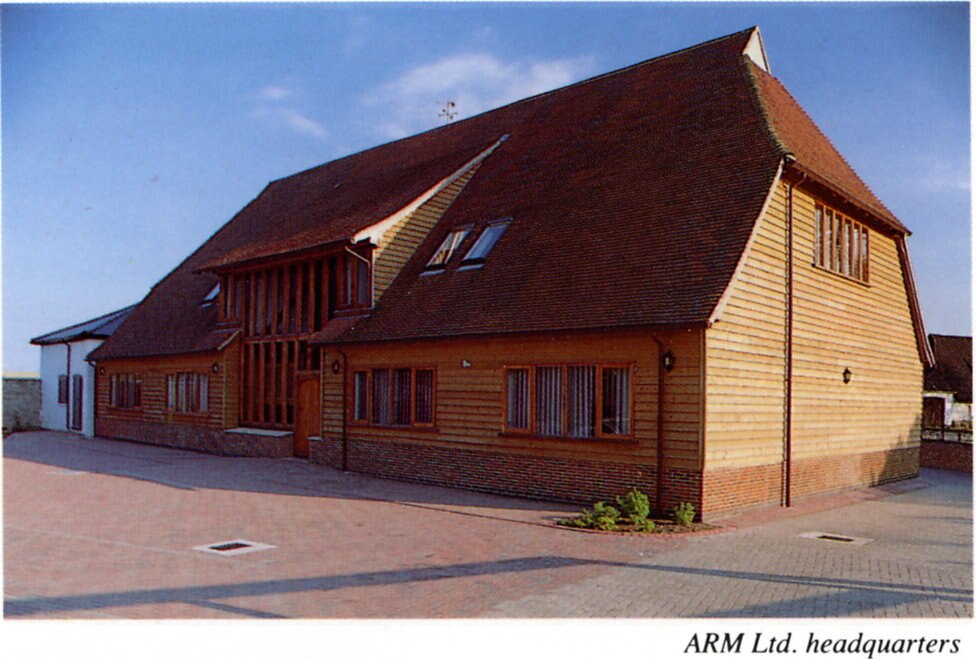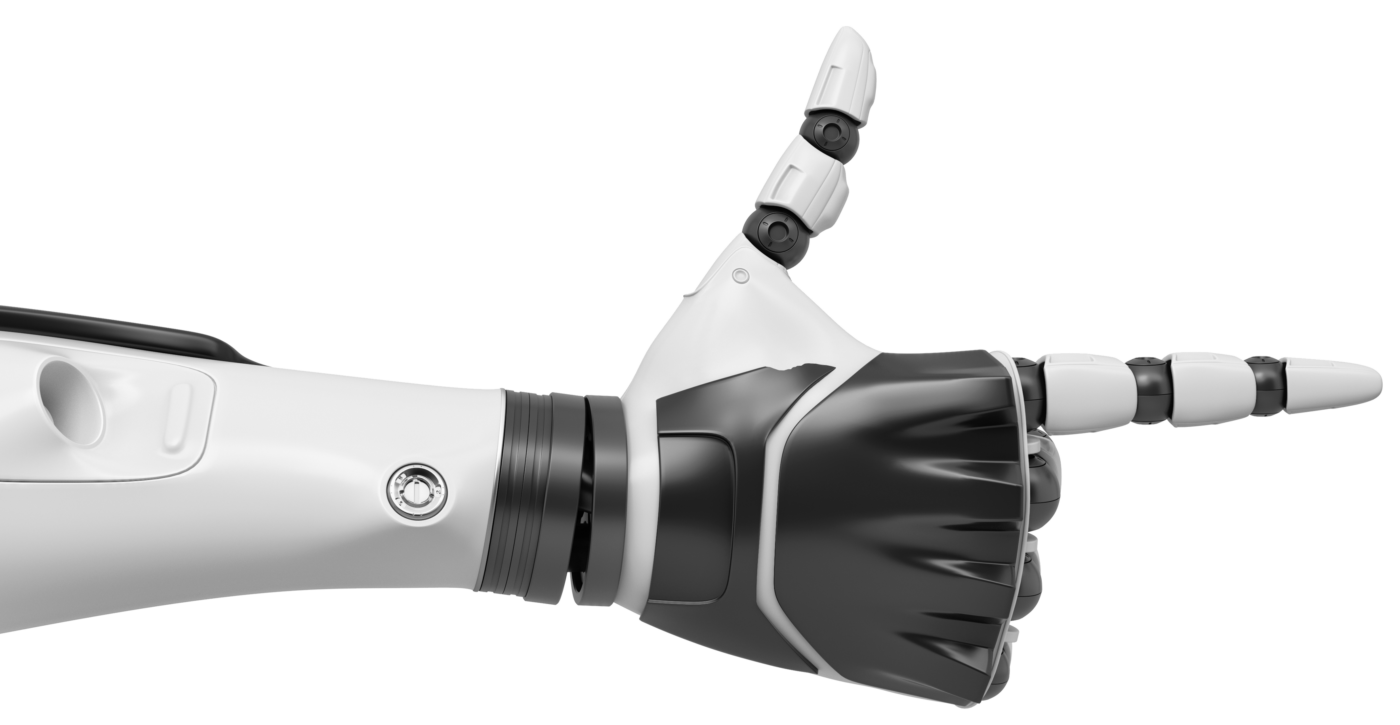The Relentless Evolution of the Arm Architecture
During the past four decades, technology has become increasingly accessible and powerful, transforming the way we live, work, and communicate. Smartphones have placed powerful computing capabilities into the hands of billions. IoT devices and vehicles continue to get smarter and more connected. Cloud services now offer on-demand access to computing resources at a global scale. More recently, advancements in artificial intelligence (AI) are reshaping industries and how they operate, as well as our daily lives.
At the heart of these transformative changes lies the Arm architecture. Since its inception in the mid-1980s, it has become the foundation for modern computing, with the architecture’s efficiency, flexibility, and advanced computing capabilities powering every stage of the technology evolution. Whether it was the mass adoption of mobile technology, the internet boom, the smartphone revolution, the exponential growth of the app ecosystem, the rise of cloud computing, and now, the AI transformation, each part of the Arm architecture journey is a testament to its flexibility, relentless innovation, and forward-thinking design.
Due to Arm’s unique position in the technology ecosystem, we can deliver architecture features years before they are realized in silicon. As a result, our architecture is constantly evolving, with the latest versions, like Armv9-A, updated every year, from large updates and new feature sets to incremental improvements that offer greater performance or efficiency in computing operations. These enable our ecosystem, including leading companies at the forefront of technology innovation, to build new solutions that have defined modern-day computing.
As we celebrate the 40th anniversary of the Arm architecture, we reflect on its pivotal role in democratizing technology and shaping the future, as well as its evolution from the first ARM1 designs to today’s Armv9 architecture.
Arm v9 (2021) – Enabling AI everywhere
The introduction of the Armv9 architecture in 2021 marked a significant milestone in the evolution of the Arm architecture. Building on the strengths of its predecessors, Armv9 introduced groundbreaking security and AI features that are essential for modern computing needs, now and in the future.
Today, the Armv9 architecture is the modern technology foundation for various markets, including flagship smartphones, datacenters, high-performance computing, automotive applications, and, most recently, IoT. It supports various computing scenarios and experiences that need to process even more data per instruction – facilitated by features like Scalable Vector Extension 2 (SVE2) and Scalable Matrix Extension (SME) – to handle large datasets and complex calculations more efficiently. This is particularly relevant for current and future AI-based applications and experiences that are growing in both size and complexity.
Key features of the Armv9 architecture include the following:
- Advanced AI capabilities: SVE2 and SME are critical to enabling AI and machine learning (ML) workloads across various computing systems. This demand stems from applications striving to deliver increasingly complex and intelligent services – from real-time language translation to enhanced personalization.
- While SVE in the Armv8 architecture was designed for high performance computing and ML workloads, SVE2 extends the instruction set to enable data processing beyond these domains, covering computer vision, multimedia and AI workloads. For example, SVE2 is present in AI-enabled flagship smartphones built on the new MediaTek Dimensity 9400 chipset, which incorporates vector instructions to improve video and image processing capabilities, leading to better quality photos and longer-lasting video.
- Meanwhile, SME accelerates generative AI and common ML workloads, delivering faster, more responsive, intelligent and immersive experiences. It also provides a common instruction set that allows developers to get great performance on their applications and then seamlessly migrate across ecosystems.
- Enhanced security: The Arm Confidential Compute Architecture (CCA) provides a reference firmware and software security architecture to support confidential computing requirements. Arm CCA is built on the Realm Management Extension (RME), which secures ‘Realms’ on devices to protect applications and data. While encryption is typically used to protect data in transit and at rest, Realms protect data and code from high privilege software like hypervisors and untrusted peripherals during processing and when in use. These Realms can interact with AI accelerators beyond the CPU and still maintain their integrity. Meanwhile, Arm Memory Tagging Extension (MTE), which is built into Armv9 CPUs, allows developers to find memory-related bugs quickly and efficiently, with 70 percent of all serious security bugs being memory safety issues.
The emergence of compute subsystems (CSS)
Armv9 is the foundation for Arm’s new compute subsystems (CSS) for various technology markets, including consumer technology (Arm CSS for Client), infrastructure (Arm Neoverse CSS) and automotive (Arm CSS for Automotive). These support the development of optimized silicon solutions that are designed to meet specific requirements for particular markets, applications, or consumers. By integrating Armv9 CPU cores, memory, I/O, and interconnect interfaces, Arm CSS enables the rapid development and deployment of optimized, specialized silicon solutions.
Arm v8 (2011) – The foundation for an expanding ecosystem
The introduction of the Armv8 architecture in 2011 revolutionized the industry through providing 64-bit processing capabilities, which significantly enhanced performance and increased the number of general registers. Armv8 first introduced features like SVE, PAC (Pointer Authentication) and BTI (Branch Target Identification), and Helium, offering enhanced support for AI, ML, and security workloads. It also introduced the ability for vectors to scale automatically at run-time, with these enabling applications to scale to multiple hardware configurations without modification, saving development time.
The growth of the Armv8 architecture led to Arm’s expansion into mobile markets and beyond, including IoT, datacenters, cloud computing, and automotive, with advanced computing solutions being built on this version of the Arm architecture.
Revolutionizing the mobile application ecosystem
The introduction of the Armv8 architecture in 2011 helped to transform the mobile industry by bringing 64-bit processing to smartphones and tablets. This leap in performance and efficiency enabled more powerful and complex mobile applications that re-defined user experiences and how consumers interacted with their devices. This set the stage for the modern application ecosystem, making it a pivotal moment in the evolution of mobile.
The growth of IoT
The proliferation of IoT and connected devices in the early and mid-2010s provided fresh technology innovation opportunities, with low power, high performance Cortex-A and Cortex-M processors built on the Armv8 architecture. In the IoT space, these included everything from the smallest embedded device used as ultra-low power sensors to high-performance, large scale industrial and storage applications.
Paving the way for modern datacenters with the first Neoverse Cores
Introduced in 2018, Arm Neoverse CPU cores are designed for high performance, power-efficiency, flexibility, and scalability, making them ideal for datacenters, network infrastructure, and high-performance computing. The first cores, which were built on the Armv8 architecture, were adopted by leading cloud providers, offering robust solutions for modern computing needs.
The Fugaku Supercomputer
Another notable achievement of the Armv8 CPU cores was the Fugaku supercomputer, which became the world’s fastest in June 2020. Built with the Fujitsu A64FX microprocessor based on the Armv8 architecture, Fugaku achieved 1.42 exaFLOPS using the mixed fp16/fp64 precision HPL-AI benchmark, helping to establish Arm’s prowess in high-performance computing.
Armv7 (2005) – The world in your hand
The Armv7 architecture debuted in 2005 with the Arm Cortex-A8 processor, which was the foundation of the world’s first smartphones in the late 2000s. Fast forward to today, around 99 percent of today’s smartphones are built on Arm technology.
While the Armv6 architecture (more on that later) introduced a limited set of SIMD instructions, Armv7 significantly expanded this capability with the introduction of the Advanced SIMD extension, commonly known as NEON. NEON, which set the scene for the introduction of SVE and SVE2 later on, provided a comprehensive SIMD instruction set, enabling more efficient processing of multimedia and signal processing applications. This accelerated data processing for heavy workloads, like AI and ML, by organizing the data into vectors – a technique still used today. It also delivered vastly improved performance and capabilities across mobile devices, with enhancements in 2D and 3D graphics and gaming.
On security, the Armv7 architecture introduced several key features including:
- TrustZone technology, which partitions the system into secure and non-secure worlds, allowing sensitive code and data to be isolated. Users then benefit from improved security for sensitive applications and data, such as secure payments and personal information.
- Protected Memory System Architecture (PMSA), which helps to improve system stability and security, while also reducing the risk of unauthorized access and potential data breaches.
- Virtualization extensions, which allow multiple operating systems to run securely on the same hardware, so devices can run different operating systems and applications simultaneously with no impact on security or performance.
Arm 1-3 and 6 (1985 – 1991) – The origins of low power compute
The Arm architecture began with the development of the ARM1 prototype before Arm was founded as a company. Following the award of a UK government contract to build the BBC Micro – an initiative to place a computer in every classroom – Acorn Computers decided to create its own processor, the ARM1, which was being built on the very first Arm architecture. The ARM1 processor, which achieved working silicon in April 1985, focused on low power consumption and high performance-per-watt, setting the stage for future Arm processor designs.
ARM1 was soon superseded by ARM2, which built upon the instruction set of the previous version to maximize the performance and efficiency of computing systems. The first product to utilize the ARM2 processor was the Arm Development System, released in 1986. This system functioned as a second processor for the BBC Master computer and included the ARM2 processor, three supporting chips, 4 MB of RAM, and development tools featuring an enhanced version of BBC BASIC. This setup provided developers with a platform to explore and harness the capabilities of the new Arm architecture.
In 1987, Acorn Computers launched the Archimedes series, the first personal computers to be built on the Arm architecture. These machines incorporated the ARM2 processor and the supporting chipset, delivering significant performance improvements in the personal computing market. The ARM3 processor followed in 1989, introducing a 4 KB cache to the architecture, which further enhanced performance.

After Arm was officially founded as a company in 1990, the Arm architecture continued to evolve with the introduction of ARM6 in 1991. The ARM6 architecture – which fully supported 32-bit processing and included features like a memory management unit (MMU) – was the computing foundation for the Arm7 processor which then became the flagship design for GSM mobile phones in the mid to late 90s – this started with the Nokia 6110 which was a huge commercial success.
Shaping the future of computing with the Arm architecture
From the early days of low-power computing for the rise of mobile to the current era of AI and high-performance computing, the Arm architecture has been at the heart of technology innovation. Today, Arm is the most power-efficient compute platform on the planet, with unmatched scale that touches 100 percent of the connected global population.
The ongoing evolution of the Arm architecture with new advanced features and capabilities continues to shape the future of computing – a future that is being built on Arm.
Any re-use permitted for informational and non-commercial or personal use only.















